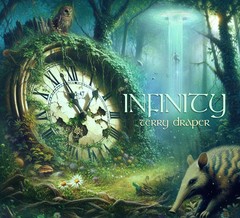Johnny Horton
小简介强尼·霍顿(Johnny Horton),这是一个很特别的乡村歌手,曾经有人这样评论:“他也许更擅长表演山地摇滚乐,但是他的牛仔帽把他的才华给遮没了。他是个可有可无的歌手。”但是无论如何,光凭着“传奇歌曲”(Saga Songs)这一项,就足以保证他不会被人所遗忘。那么,就让我们来追溯他的生平吧!强尼·霍顿于1925年4月30日出生在加尼弗尼亚的洛杉矶,1960年11月5日因车祸死于德克萨斯,享年35岁,这是位英年早逝的歌手,如果他活得长久一些,相信他能在乐坛取得更大的成就。他原名John Gale Horton,家庭是那种典型的农庄人家,母亲教会了他弹奏吉他,他因为打篮球出色在Baylor大学和西雅图大学都获得过体育方面的奖学金,他后来搬到阿拉斯加,曾经在钓鱼用品工厂工作过一段时间,还曾设计过钓鱼用具,并且由此获得了“歌唱渔夫”(the Singing Fisherman)的绰号。1950年,他在帕萨德纳的KXLA电台开始了演艺生涯。1951年与Cormac公司签约,然后又成为了法博·罗宾逊唱片公司的第一位艺人,1952年他又加入了墨丘利(Mercury )唱片公司,但是不久就因为选择歌曲的问题和公司发生冲突。最初的几年,他的演唱事业很不成功。1953年9月他同著名乡村艺人汉克·威廉姆斯(Hank Williams,也是位英年早逝的歌手,开创Honky Tonk音乐的先驱)的遗孀比利·珍结婚,后者一直在坚定不移地鼓励他,然后特尔曼·弗兰克做了他的经纪人,霍顿转投哥伦比亚唱片公司,接下来他们合写的一首“下等酒吧男人”(Honky Tonk Man)使他第一次登上了美国乡村音乐榜。在录制这首歌的前一天,当时刚刚出名的猫王艾尔维斯·普莱斯利(Elvis Presley)在同一座录音棚中录下了他的那支名曲“伤心旅店”(Heartbreak Hotel)。这首“下等酒吧男人”在1986年被德怀特·约卡姆(Dwight Yoakam)成功地再次表演,在1989年,老牌乡村艺人乔治·琼斯(George Jones)重新演绎了强尼·霍顿的另一支名曲“I'm A One Woman Man”。在那时,强尼·霍顿在山地摇滚乐方面颇有建树,五十年代正是摇滚乐方兴未艾的时候,这当然主要归功于猫王,但是强尼·霍顿的作用也是有的。他的另外几支有名的歌曲是“All Grown Up”、“Honky Tonk Hardwood Floor”。1959年,霍顿改变他的演唱方向,全身心地投入到了叙事歌曲之中,这些歌曲往往是建立在历史事件的基础上的。特尔曼·弗兰克为他写得一首“当春天来到阿拉斯加”(When It's Springtime In Alaska)使强尼·霍顿第一次拿到了美国乡村排行榜的第一,接下来他演唱的一首改编自Jimmie Driftwood的“新奥尔良的战斗”(The Battle Of New Orleans,这首歌描写1814年安德鲁·杰克逊上校率领美国军队在新奥尔良打败英国人的故事),这首歌同时拿到了乡村音乐榜和流行音乐榜的首位,并且在流行音乐榜首呆了6周,同时在英国音乐榜上也排到了第2名。并且得到了2项格莱美奖,最佳歌曲奖和最佳乡村歌曲录音奖。特别不容易的是,因为他的唱本中有“血腥的英国佬the bloody British”这样一个称谓,从而被英国BBC广播公司所禁播。此外,他的其他2支歌“Johnny Reb”、“俾斯麦号的沉没”(Sink the Bismarck这支歌的灵感来自于电影,是一首描写二战的歌,曾经排到美国榜的第3名)也取得了不错的成绩,接下来他演唱了一首由著名西部电影明星约翰·韦恩(John Wayne)主演的同名电影主题曲“北上阿拉斯加”(North To Alaska)在美国乡村音乐榜的榜首呆了5个星期,同时又排到美国流行音乐榜的第4名和英国榜的第23名。还有一支旋律非常优美、节奏轻快动人的“Sal's Got A Sugar lip”是他最后遗作,当时并没有发行。在1960年11月5日,在德州的米兰诺,强尼·霍顿所乘坐的汽车与一辆装载泥土的卡车发生了碰撞,他的经纪人特尔曼·弗兰克头部和胸部受伤,吉他手汤米·汤姆林森腿部严重受伤,因为他同时患有糖尿病,几个月后腿部被截肢,后来他继续从事表演,为克劳德·金(Claude King)伴奏,但始终无法从阴影中走出。肇事的卡车司机亦在事故中丧生。而强尼·霍顿本人则在被送往医院的途中死去。临死前,他庄严地吻了吻妻子比利·珍,就在从前汉克·威廉姆斯所吻过的同一个地方,比利·珍再次成为了乡村歌星的遗孀。强尼·霍顿被认为是KWKH电台热门节目“Louisiana Hayride”最后一位主打明星(汉克·威廉姆斯也曾在这节目中大放光彩),最后被埋葬在路易斯安那州的博塞尔城。怎么来形容这位歌手呢?就像是一张收录他演唱的传奇歌曲的唱片封面上所写得那样:强尼·霍顿创造了历史,我们可以稍稍修改一下,改成“强尼·霍顿用歌声记载了历史”,这样就更恰当了。他用歌曲重新演绎了美国的历史,从独立战争到第二次世界大战,从华盛顿、约翰·保罗·琼斯这些民族英雄,再到主张废奴主义的林肯总统,然后又歌颂了西部边疆的开拓者,从他的歌曲中我们就可以了解到曾发生过的历史事件。作为和猫王同时出道的艺人,他其实有可能在摇滚乐的领域走得更远,而不是仅仅推出一两首摇滚歌曲,他嗓音的爆发力丝毫不逊色于猫王,使他所演唱的歌曲都张扬着一种积极热情的活力。然而不幸的是,命运没有给他更多的机会去表现,1959年强尼·霍顿才刚刚开始出名,而且势头非常强劲,无论是在国内还是国外,流行还是乡村,他都取得了巨大的成功,但是,一年之后他就逝世了,就像流星一般,如果真的说他在乡村音乐历史上是个可有可无的人物,那实在很不公平,至少这短短一年的时间里,他给我们留下了几十首传奇歌曲,所以就凭这一点,他也是当之无愧的“King Of Saga Songs”。Johnny Horton 10首金曲:1、Joe's Been A-Gittin' There2、sal's got a sugar lip3、Battle of New Orleans4、The Battle of Bull Run5、John Paul Jones6、North To Alaska7、When It's Spring Time In Alask8、Young Abe Lincoln9、HONKY TONK MAN10、All Grown Up by Stephen Thomas ErlewineAlthough he is better-remembered for his historical songs, Johnny Horton was one of the best and most popular honky tonk singers of the late 50s. Horton managed to infuse honky tonk with an urgent rockabilly underpinning. His career may have been cut short by a fatal car crash in 1960, but his music reverberated throughout the next three decades.Horton was born in Los Angeles in 1925, the son of sharecropping parents. During his childhood, his family continually moved between California and Texas, in an attempt to find work. His mother taught him how to play guitar at the age of 11. Horton graduated from high school in 1944 and attended a Methodist seminary with the intent of joining a ministry. After a short while, he left the seminary and began traveling across the country, eventually moving to Alaska in 1949 to become a fisherman. While he was in Alaska, he began writing songs in earnest. The following year, Horton moved back to east Texas, where he entered a talent contest hosted by Jim Reeves, who was then an unknown vocalist. He won the contest, which encouraged him to pursue a career as a performer. Horton started out by playing talent contests throughout Texas, which is where he gained the attention of Fabor Robison, a music manager that was notorious for his incompetence and his scams. In early 1951, Robison became Hortons manager and managed to secure him a recording contract with Corman Records. However, shortly after his signing, the label folded. Robison then founded his own label, Abbott Records, with the specific intent of recording Horton. None of these records had any chart success. During 1951, Horton began performing on various Los Angeles TV shows and hosted a radio show in Pasadena, where he performed under the name the Singing Fisherman. By early 1952, Robison had moved Horton to Mercury Records. At the end of 1951, Horton relocated from California to Shreveport, LA, where he became a regular on the Louisiana Hayride. However, Lousiana was filled with pitfalls — his first wife left him shortly after the move, and Robison severed all ties with Horton when he became Reeves manager. During 1952, Hank Williams rejoined the cast of the Hayride and became a kind of mentor for Horton. After Williams died on New Years Eve of 1952, Horton became close with his widow, Billie Jean; the couple married in September of 1953.Although he had a regular job on the Hayride, Hortons recording career was going nowhere — none of his Mercury records were selling, and rock & roll was beginning to overtake countrys share of the market place. Hortons fortunes changed in the latter half of 1955, when he hired Webb Pierces manager Tillman Franks as his own manager and quit Mercury Records. Franks had Pierce help him secure a contract for Horton with Columbia Records by the end of 1955. The change in record labels breathed life into Hortons career. At his first Columbia session, he cut Honky Tonk Man, his first single for the label and one that would eventually become a honky tonk classic. By the spring of 1956, the song had reached the country Top Ten and Horton was well on his way to becoming a star.Honky Tonk Man was edgy enough to have Horton grouped in on the more country-oriented side of rockabilly. Wearing a large cowboy hat to hide his receding hairline, he became a popular concert attraction and racked up three more hit singles — Im a One-Woman Man (number seven), Im Coming Home (number 11), The Woman I Need (number nine) — in the next year. However, the hits dried up just as quickly as they arrived; for the latter half of 1957 and 1958, he didnt hit the charts at all. Horton responded by cutting some rockabilly, which was beginning to fall out of favor by the time his singles were released.In the fall of 1958, he bounced back with the Top Ten All Grown Up, but it wasnt until the ballad When Its Springtime in Alaska (Its Forty Below) hit the charts in early 1959 that he achieved a comeback. The song fit neatly into the folk-based story songs that were becoming popular in the late 50s, and it climbed all the way to number one. Its success inspired his next single, The Battle of New Orleans. Taken from a 1958 Jimmie Driftwood album, the song was a historical saga song like When Its Springtime in Alaska, but it was far more humorous. It was also far more successful, topping the country charts for ten weeks and crossing over into the pop charts, where it was number one for six weeks. After the back-to-back number one successes of When Its Spring Time in Alaska and The Battle of New Orleans, Horton concentrated solely on folky saga songs. Johnny Reb became a Top Ten hit in the fall of 1959, and Sink the Bismarck was a Top Ten hit in the spring of 1960, followed by the number one hit North to Alaska in the fall of 1960.Around the time of North to Alaskas November release, Horton claimed that he was getting premonitions of an early death. Sadly, his premonitions came true. On November 4, 1960, he suffered a car crash driving home to Shreveport after a concert in Austin, TX. Horton was still alive after the wreck, but he died on the way to the hospital; the other passengers in his car had severe injuries, but they survived. Although he died early in his career, Horton left behind a recorded legacy that proved to be quite influential. Artists like George Jones and Dwight Yoakam have covered his songs, and echoes of Hortons music can still be heard in honky tonk and country-rock music well into the 90s.


 Im Coming Home - Johnny Horton
Im Coming Home - Johnny Horton



























![[STATION] aespa《Dreams Come True》MV Teaser - aespa (에스파)](https://img2.kuwo.cn/wmvpic/324/79/54/2120387380.jpg?imageView2/1/w/195/h/130/format/jpg/q/60)





